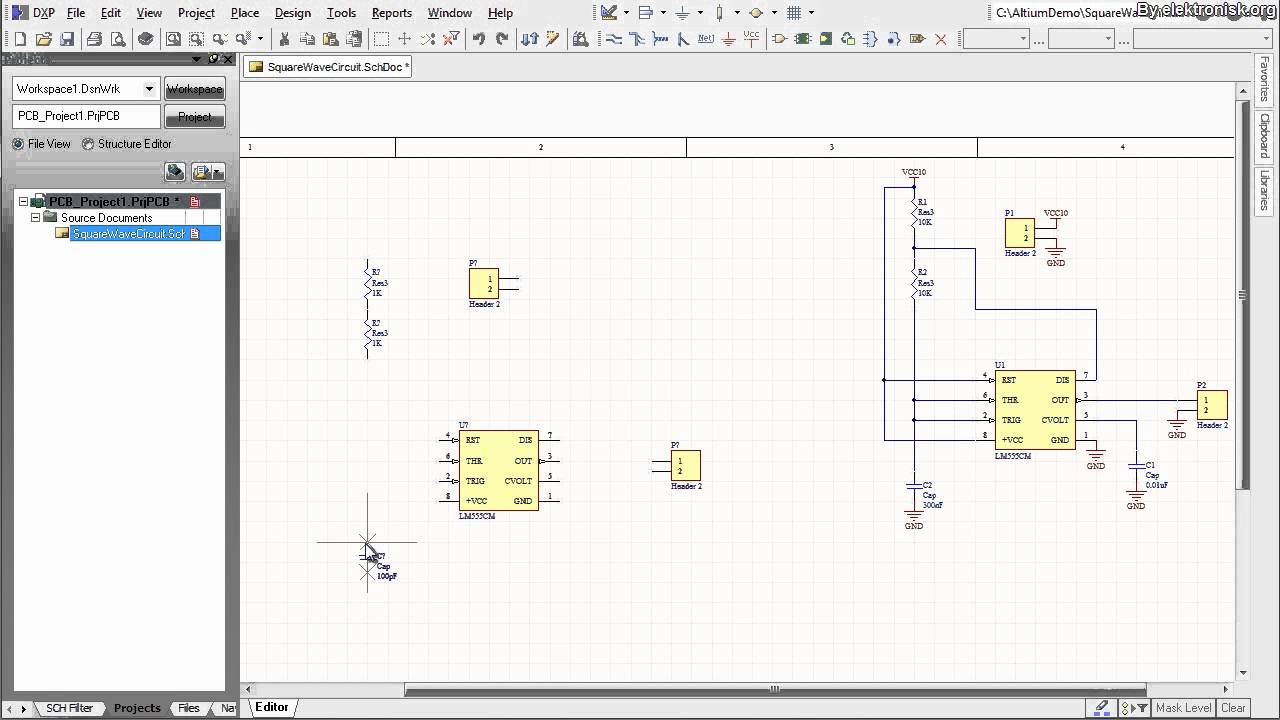

If you’ve connected this test point in series with the target interconnect, you can use this component to measure the voltage waveform on the target interconnect (i.e., with an oscilloscope). Note that these only have one connection point. These components are great for attaching a probe to take measurements of a waveform. This component will be defined in your schematic as a 2-terminal component and placed in the layout just like any other through-hole component. Some companies manufacture and sell test point components that can be mounted directly on your PCB. It’s common to place an array of test points around a large processor so that important nets (PWR, GND, configuration, etc.) can be accessed during testing. More specialized testing with high-speed/high-frequency signals will need a specific test structure with controlled and matched impedances at each port keep this in mind before going and placing test points over every interconnect. For low-speed digital and low-frequency analog (even if it is impedance controlled, this will not be a signal integrity problem. These could be placed along a trace (in series) or off to the side as a small stub. You could also place this as a via so that inner layers could be easily accessed.

One thing you can do is intentionally place a pad along an interconnect or somewhere on a bus as a test point. Now, let’s look at some of the options you have for test points in your PCB layout. Test points can also be tagged for access during fabrication or assembly in your design software. If you’re scaling in any way and you’ve thoroughly evaluated your testing requirements, then it’s best to place test points for in-circuit or functional testing with your manufacturer, this way they can automate those basic functional tests on the line.Īs far as what are test points, they can be placed as components, pads, vias, or other printed elements in your board. You’ll be able to see and touch the boards and instruments you’re working with, so it will be much easier to identify problems during testing. Even if you do not intentionally place test points as pads or other fixtures in your PCB layout, you can still define specific conductors as test points.ĭoes every design need test points? Not necessarily for a prototype, you’re better off taking the time to do functional testing by hand so that you can more easily identify any failures. These can then be accessed with a test fixture during electrical testing, such as basic electrical (continuity) testing, in-circuit testing, or a fixture-les flying probe test. Very simply, PCB test points can be intentionally placed as printed elements in a design, such as a bare pad or a via with a connection to an internal trace/plane. PCB Test Points as Components and Printed Elements If you’ve never used a test point or you’re not sure if you need test points, keep reading to see what options you have for test point usage in your PCB layout.

Test points in your electronic assembly will give you a location to access components and take important measurements to verify functionality.


 0 kommentar(er)
0 kommentar(er)
